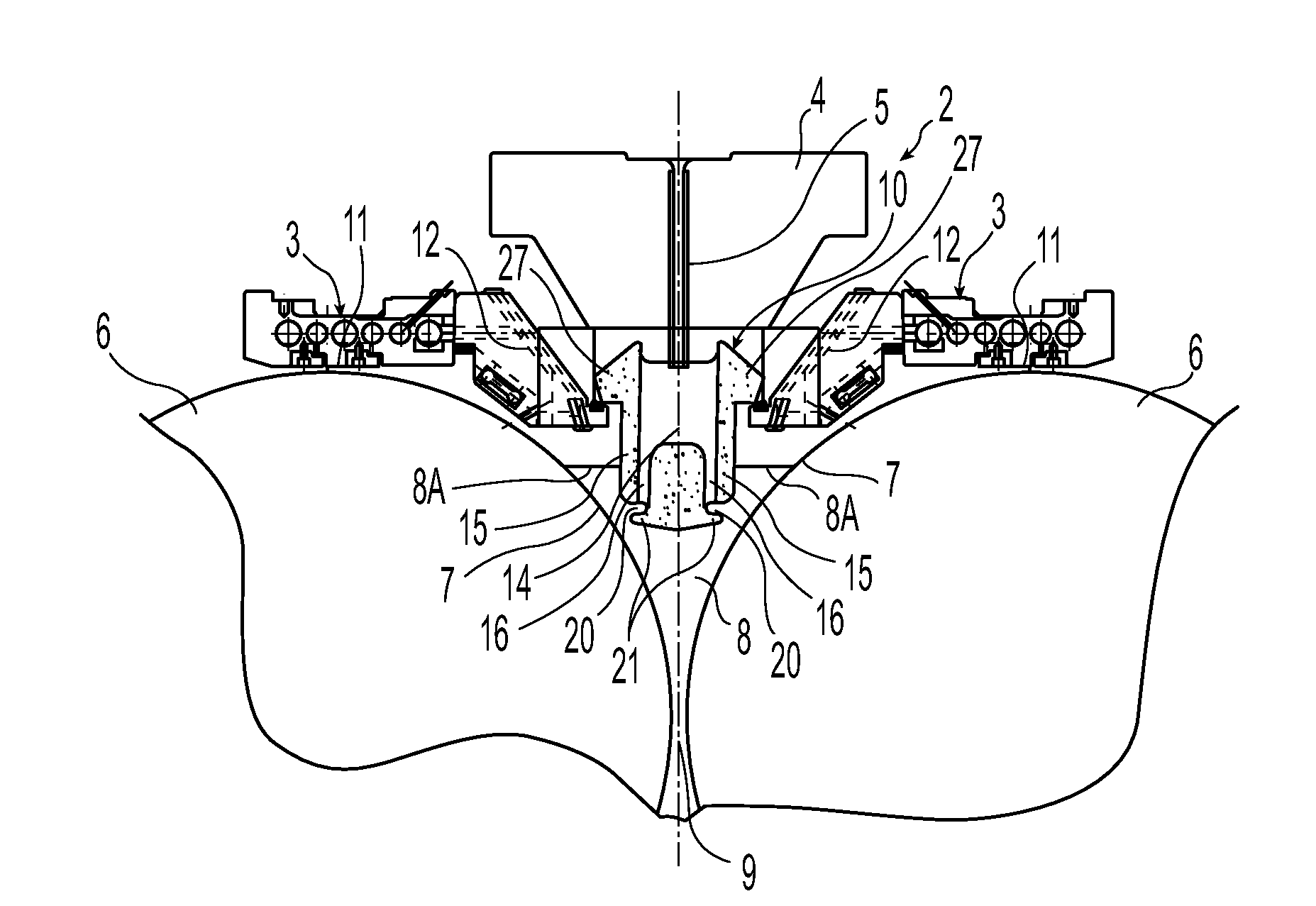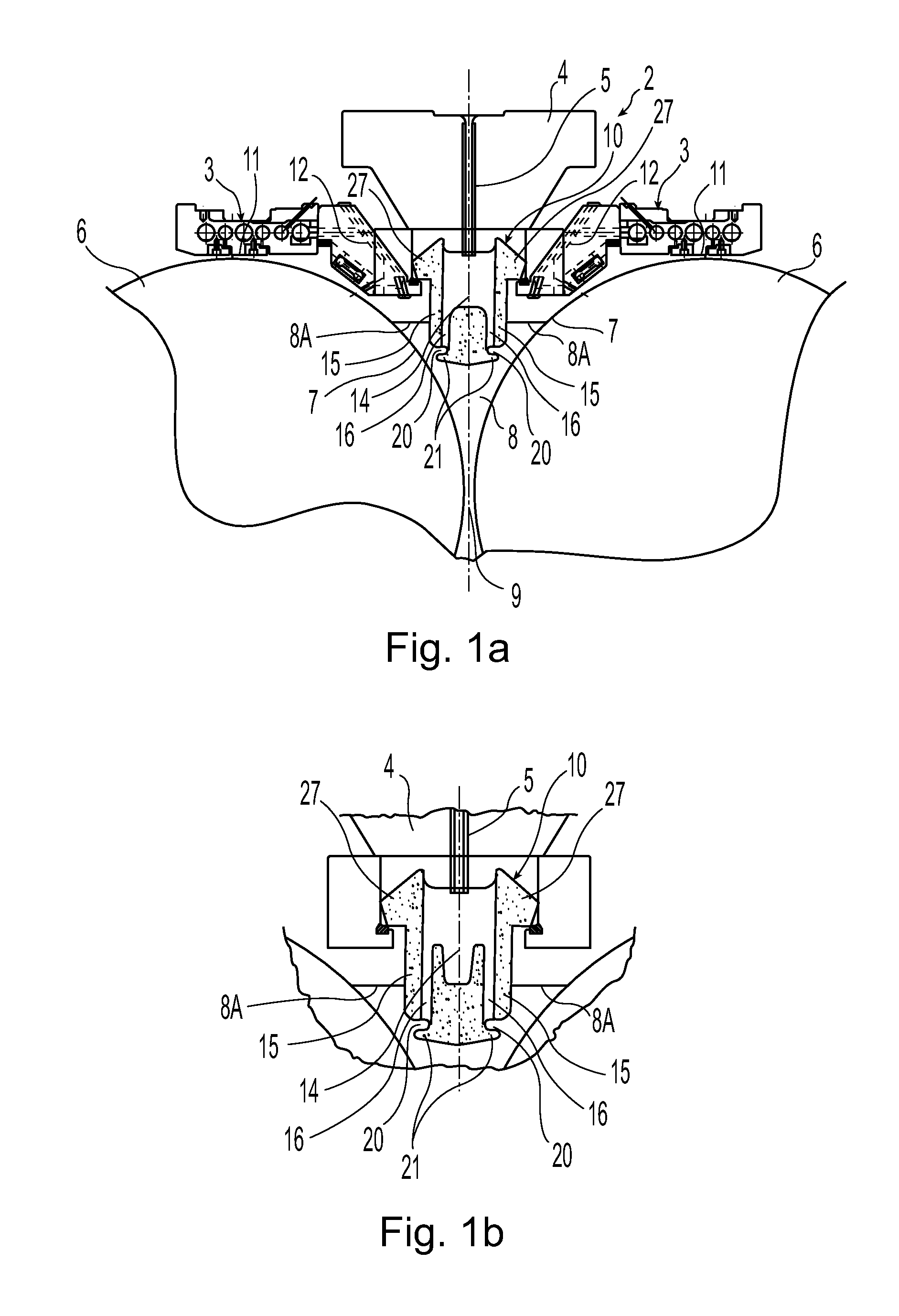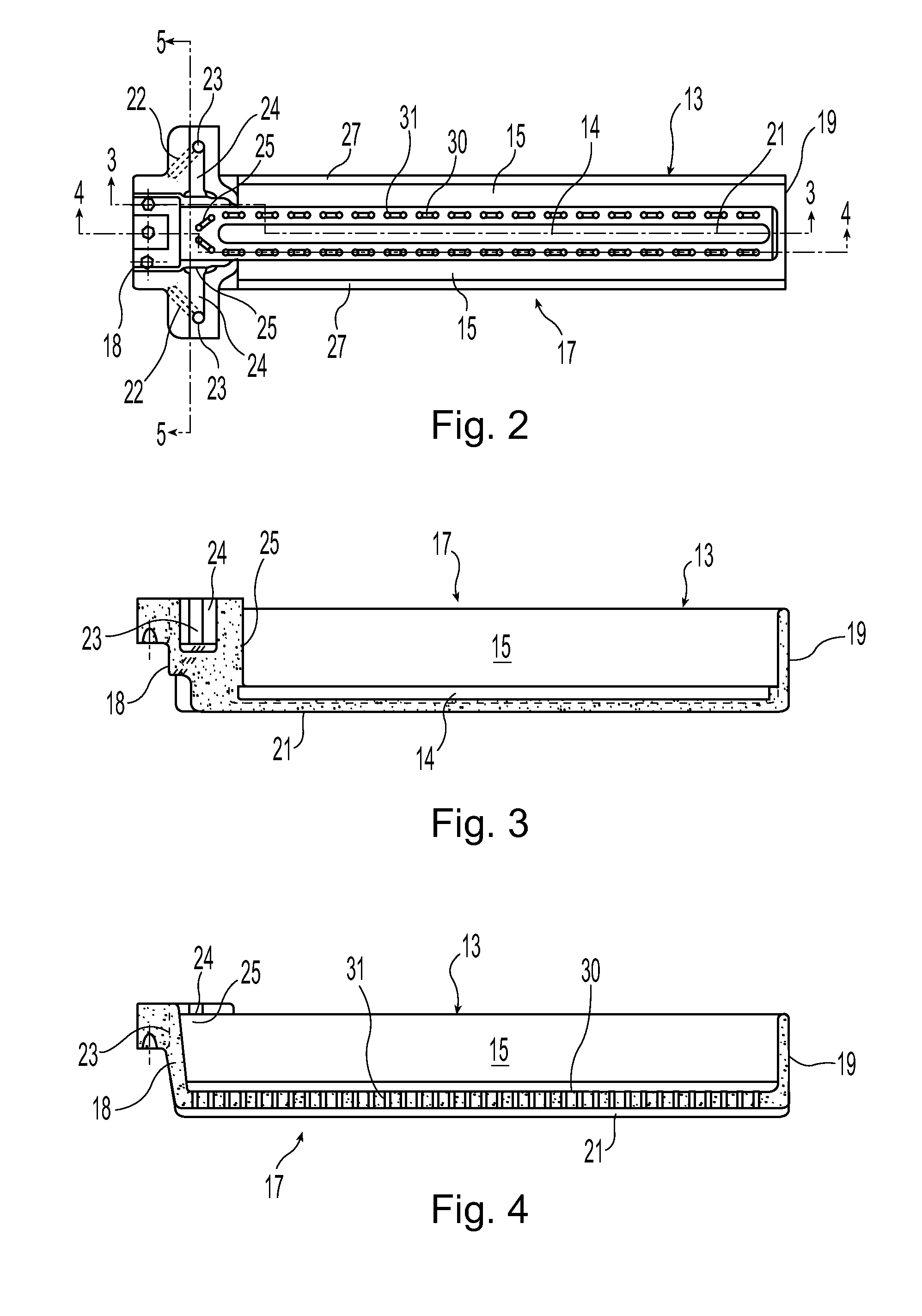Casting delivery nozzle
- Summary
- Abstract
- Description
- Claims
- Application Information
AI Technical Summary
Benefits of technology
Problems solved by technology
Method used
Image
Examples
Embodiment Construction
[0034]Referring to FIG. 1a, the metal strip casting apparatus 2 includes a metal delivery nozzle 10 formed in segments 13 located below a metal distributor 4 (also called a moveable tundish or transition piece) and above casting rolls 6. Casting rolls 6 are laterally positioned with nip 9 formed between them. Metal distributor 4 receives metal from a ladle through a metal delivery system (not shown) and delivers the molten metal to delivery nozzle 10. A shroud 5 may extend from metal distributor 4 and into delivery nozzle 10, for the purpose of transferring molten metal into the segments of delivery nozzle 10. In the alternative, metal distributor 4 may transfer metal to the segments of delivery nozzle 10 via a hole in the bottom of metal distributor 4. Below delivery nozzle 10, a casting pool 8 having surface 8A is formed supported on the casting surfaces 7 of casting rolls 6 adjacent nip 9. Casting pool 8 is constrained at the ends of the casting rolls by side dams or plates (not ...
PUM
| Property | Measurement | Unit |
|---|---|---|
| Flow rate | aaaaa | aaaaa |
Abstract
Description
Claims
Application Information
 Login to View More
Login to View More - R&D
- Intellectual Property
- Life Sciences
- Materials
- Tech Scout
- Unparalleled Data Quality
- Higher Quality Content
- 60% Fewer Hallucinations
Browse by: Latest US Patents, China's latest patents, Technical Efficacy Thesaurus, Application Domain, Technology Topic, Popular Technical Reports.
© 2025 PatSnap. All rights reserved.Legal|Privacy policy|Modern Slavery Act Transparency Statement|Sitemap|About US| Contact US: help@patsnap.com



